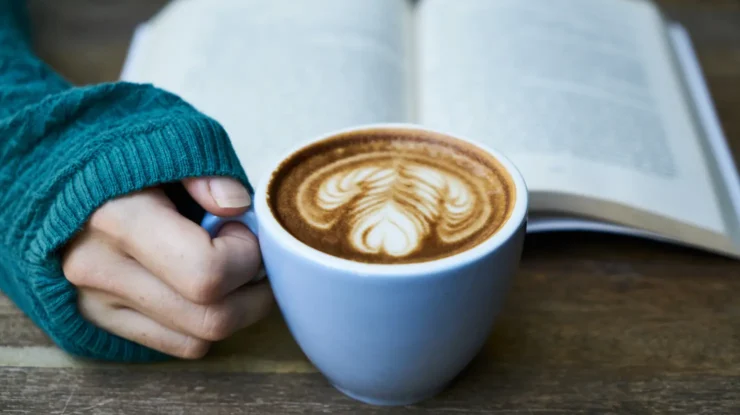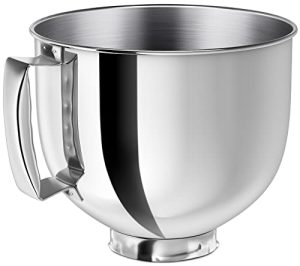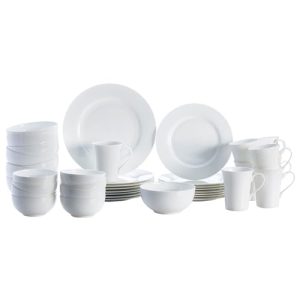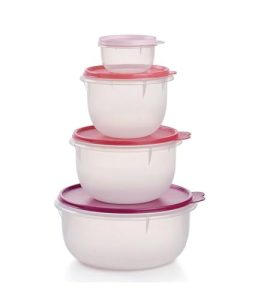Imagine starting your day without the comforting aroma of freshly brewed coffee. For many, a coffee maker is not just an appliance; it’s a daily ritual.
But have you ever stopped to wonder how much electricity your beloved coffee maker uses? You might be surprised by the answer. Whether you’re a casual sipper or a caffeine enthusiast, understanding the energy consumption of your coffee maker can help you make smarter choices.
Not only could it impact your electricity bill, but it can also be a step towards a more energy-efficient lifestyle. Curious about how your morning brew affects your power usage? Stick around as we dive into the electrifying truth behind coffee makers and their energy consumption. Your journey to a more informed and efficient coffee habit starts here.

Credit: www.effiworkx.com
How Coffee Makers Work
Understanding the electricity use of coffee makers is essential for energy-conscious consumers. These machines typically consume moderate power, especially during brewing. Selecting energy-efficient models can further reduce electricity use, making your daily coffee habit more sustainable.
Understanding how coffee makers work can help you gauge their electricity usage and make informed choices. You might be surprised by how these machines, which bring you your daily dose of caffeine, operate with simple yet efficient mechanisms. Let’s delve into the basic components and brewing process to see how they function.Basic Components
At the heart of any coffee maker are a few essential components that make it tick. The heating element is crucial as it heats the water to the ideal brewing temperature. This component is usually a coiled wire similar to the one found in a toaster. The water reservoir holds the water until it’s ready to be heated. Most machines also feature a pump that moves water from the reservoir to the heating element. Lastly, the filter basket holds the coffee grounds, allowing hot water to pass through and extract the flavor.Brewing Process
The brewing process might seem like magic, but it’s a straightforward journey from water to your cup. When you turn on your coffee maker, the water in the reservoir flows into the heating element. The heating element raises the water temperature quickly, often reaching between 195°F and 205°F. Once heated, the water travels through a tube, reaching the filter basket. Here, it saturates the coffee grounds, extracting flavors and oils to create that delicious brew. The brewed coffee then drips into the carafe, ready for you to enjoy. Have you ever considered how these basic steps impact electricity usage? The efficiency of each component plays a role in energy consumption. Next time you brew a cup, think about how the simplicity of these processes can affect your electricity bill.Types Of Coffee Makers
Coffee is a beloved ritual for many, kickstarting the day or providing a midday pick-me-up. But have you ever wondered about the electricity your coffee maker consumes? The type of coffee maker you use can significantly impact energy usage. Let’s explore the various types of coffee makers and see how they fare in terms of electricity consumption.
Drip Coffee Makers
Drip coffee makers are a staple in many households, often praised for their convenience and ability to brew multiple cups at once. These machines typically use moderate amounts of electricity, mainly because they maintain heat for the water and the warming plate. If you brew a pot every morning, consider a programmable model that turns off after brewing. This simple feature can save electricity and prevent unnecessary energy consumption.
Single-serve Machines
Single-serve machines, like Keurig or Nespresso, are perfect for those who prefer a quick cup without brewing a full pot. These machines heat water rapidly, which can spike electricity use. However, their short brewing cycles mean they don’t stay on long, reducing overall energy use. If you’re someone who enjoys variety and convenience, these machines might be a good fit, but keep an eye on how many cups you’re brewing daily.
Espresso Machines
Espresso machines are a dream for coffee enthusiasts who crave barista-quality drinks at home. These machines can be energy-intensive due to their high-pressure pumps and boilers. If you love using your espresso machine, consider models with energy-saving modes. These features can help lower electricity use without compromising on the rich flavors you adore.
French Press And Others
French press coffee makers don’t use electricity, making them an eco-friendly choice. They rely on manual effort to steep and press coffee grounds. It’s a great option if you’re conscious about energy consumption. Other manual methods like AeroPress or pour-over also bypass electricity use, offering a hands-on coffee experience. Are you ready to try a manual brewing method that saves energy and enhances your coffee ritual?
Choosing the right coffee maker can be an easy way to manage your electricity usage. Think about how often you brew and the features that matter most to you. Could a simple switch in your coffee routine contribute to a greener lifestyle?
Energy Consumption Factors
Have you ever wondered how much energy your coffee maker consumes? It’s easy to overlook this as you sip your morning brew, but understanding the energy consumption factors can help you make more eco-friendly choices. Whether you’re a coffee enthusiast or just someone trying to cut down on electricity bills, these insights are worth considering.
Heating Element Power
The heating element is the heart of your coffee maker. It’s responsible for heating the water to brew your coffee. The power used by this component varies between models. Small coffee makers generally have less wattage, while larger ones may need more power to heat water quickly.
Imagine waking up late and needing a quick cup of coffee. A powerful heating element will brew faster, but it also consumes more electricity. Check the wattage on your coffee maker; it’s usually indicated on the machine or in the manual. A higher wattage means higher electricity use, but also a faster brew.
Brew Time Duration
How long does your coffee maker take to brew a pot of coffee? The longer it takes, the more electricity it uses. A quick brew is not only convenient but also energy-efficient. If your coffee maker has an energy-saving mode, consider using it.
Some mornings, you might find yourself staring at the coffee maker, waiting impatiently. Reducing brew time can save energy. Look for machines with features like rapid brew technology, which can save both time and electricity.
Size And Capacity
Did you know the size and capacity of your coffee maker impacts its energy use? Larger machines need more power, especially if they’re brewing a full pot. Smaller units, designed for single servings, generally consume less.
Think about how much coffee you actually drink. If you’re only brewing for yourself, consider a smaller coffee maker. It can be more energy-efficient and easier to store. Plus, it’s often less expensive than larger models, saving you money in more ways than one.
As you evaluate your coffee maker’s electricity consumption, consider these factors. Is your morning cup worth the energy it consumes? Sometimes, small changes can lead to big savings. Are you ready to make your coffee routine more energy-efficient?

Credit: electricityplans.com
Comparing Energy Use
Understanding how much electricity coffee makers use helps manage household energy costs. Many people wonder if these appliances consume a lot of power. It’s crucial to compare their energy use with other household devices. This comparison will provide a clearer picture of their electricity consumption.
Coffee Makers Vs. Other Appliances
Coffee makers typically consume less electricity than many kitchen appliances. Most drip coffee makers use 750 to 1200 watts. This is lower compared to toasters or microwave ovens. Toasters can use up to 1500 watts, while microwaves might use 1200 watts. Refrigerators run constantly, using much more power over time. Coffee makers operate briefly, which limits their total energy use.
Electricity Costs
Calculating the cost of using a coffee maker involves knowing local electricity rates. On average, using a coffee maker for one hour costs about 12 cents. This is based on an average electricity rate of 13 cents per kilowatt-hour. Compare this to using a microwave for an hour, which can cost 16 cents. The short operation time of a coffee maker keeps its energy costs low. Understanding these costs helps manage monthly electricity bills.
Tips To Reduce Energy Use
Many coffee lovers worry about electricity use. Coffee makers can be energy hogs. But, there are ways to cut down energy use. Simple changes can make a big difference. Here are some tips to help save on electricity.
Efficient Brewing Practices
Brew only the amount you need. This saves energy. Don’t keep the coffee maker on. Turn it off after use. Use the timer feature wisely. It helps to save electricity. Avoid reheating coffee. It uses more power.
Choosing Energy-efficient Models
Opt for energy-efficient coffee makers. Look for the Energy Star label. These models consume less power. They are designed to be energy-saving. Read reviews before buying. Check for features that save electricity.
Regular Maintenance
Keep your coffee maker clean. A clean machine works efficiently. Descale it regularly. This prevents energy waste. Check for leaks. Fix them to save electricity. Replace worn parts promptly. This ensures optimal performance.
Environmental Impact
Many people love their morning coffee ritual, but how often do we consider the environmental impact of our coffee makers? It’s not just about the beans or the packaging. The energy consumption of these devices also plays a significant role in their overall carbon footprint.
Carbon Footprint Considerations
Every appliance in your home, including your coffee maker, contributes to your carbon footprint. Coffee makers typically use between 750 to 1200 watts of electricity. Leaving it on all day or brewing multiple pots can quickly add up.
Think about how often you brew coffee at home. If you’re like me and can’t start your day without a fresh cup, it’s worth considering how much energy this habit consumes annually. Simple adjustments, such as turning off the machine immediately after use, can make a noticeable difference.
Are you the type to leave your coffee maker on even when you’re not using it? This might be more common than you think, inadvertently increasing your electricity bill and environmental impact.
Sustainable Coffee Brewing
Opting for more sustainable brewing methods can reduce your coffee maker’s environmental footprint. Consider using a programmable coffee maker that switches off automatically after brewing. This feature ensures that the device isn’t using more electricity than necessary.
Alternatively, explore manual brewing methods such as a French press or pour-over. These methods require no electricity, only hot water, which can be boiled using more energy-efficient appliances. It’s a small change that can significantly lower your overall energy usage.
Have you ever thought about the environmental benefits of brewing your coffee manually? It’s not just about reducing electricity usage; it also allows you to control the waste and quality of your brew.
Adapting these practices not only lessens your environmental impact but also enriches your coffee experience. By being mindful of how and when you use your coffee maker, you contribute positively to the planet while enjoying your favorite drink.
Credit: blog.ecoflow.com
Frequently Asked Questions
Do Coffee Makers Draw A Lot Of Electricity?
Coffee makers typically use moderate electricity, around 750 to 1500 watts per brew cycle. Usage varies by model and size. Energy-efficient options can help reduce power consumption. Regular maintenance and timely unplugging can minimize electricity use. Consider investing in an energy-efficient coffee maker for better efficiency.
How Much Does It Cost To Leave A Coffee Maker Plugged In?
Leaving a coffee maker plugged in typically costs around $0. 10 to $0. 20 per month. This cost depends on your electricity rate and the coffee maker’s energy consumption in standby mode. Unplugging it can help save on electricity bills and reduce energy waste.
Does Leaving A Coffee Machine Plugged In Use Electricity?
Yes, leaving a coffee machine plugged in uses electricity. It consumes power due to standby mode. Unplugging saves energy and reduces electricity costs. Always unplug appliances when not in use to conserve energy and promote safety. Consider using a smart plug to control power usage efficiently.
Are Coffee Machines Expensive To Run?
Coffee machines can be affordable to run. Energy-efficient models save electricity. Regular maintenance reduces costs. Using quality coffee can be more economical. Consider water and filter expenses too.
Conclusion
Coffee makers don’t use much electricity. Most models are energy-efficient. Choosing one with an auto-off feature can save more power. Regular maintenance ensures your coffee maker runs efficiently. Consider unplugging when not in use. This helps reduce energy consumption. Small changes can make a big difference.
Enjoy your coffee guilt-free. You save energy while savoring each cup. Keep these tips in mind. Your coffee moments remain delightful and eco-friendly.



